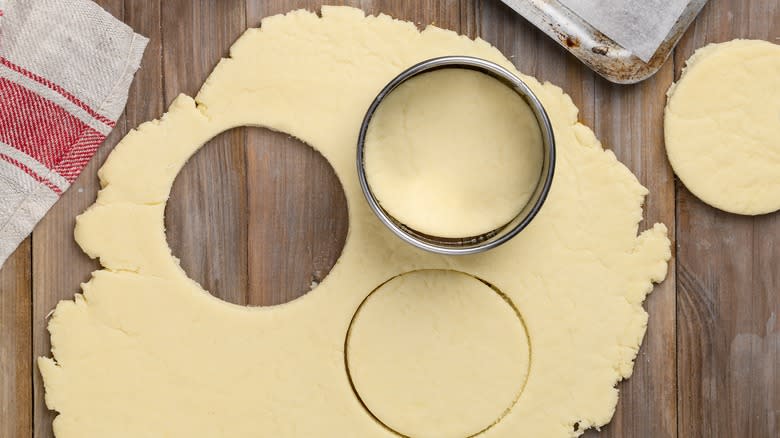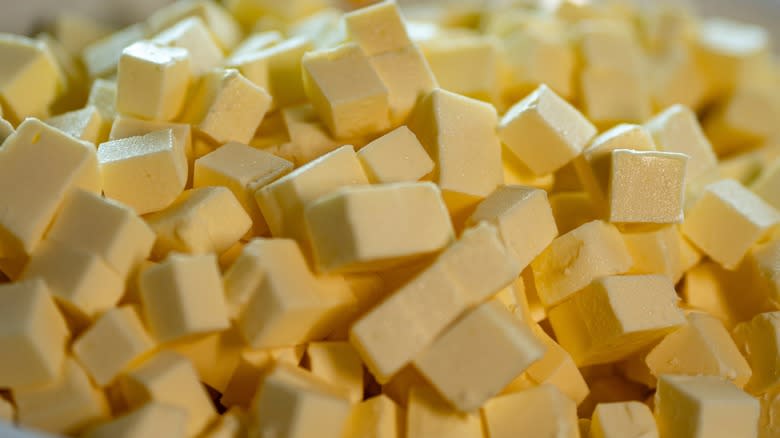Fix Crumbly Shortbread Dough With Ina Garten's Easy Trick

- Oops!Something went wrong.Please try again later.
There's nothing like biting into a buttery slice of shortbread fresh out of the oven, whether you've made a classic Scottish shortbread, a flavored variety, or something a bit more unique. However, to get those results, you've first got to mix your dough, which can sometimes be a bit more challenging than you might think.
Shortbread typically contains just a few ingredients — flour, sugar, butter, and salt. With no extra liquid, it sometimes might be tough to get your dough to a smooth consistency and you can wind up with dry and crumbly dough instead.
If you're facing this issue, Ina Garten offers a tip on her blog, Barefoot Contessa, that might just solve your worries: "If the shortbread dough feels dry, I add a teaspoon or two of water until it's easier to work with." The extra moisture can help to bring the dough together and give it a smoother texture.
Read more: Cake Hacks Every Baker Will Wish They Knew Sooner
Why Adding Extra Water Works

As Ina Garten explains, "Different butters have different water content, and some can be drier than others." Butter contains between 16 and 18% water, and that water content is partly what's responsible for hydrating the flour, allowing for it to cook. It also helps to hold your shortbread cookie dough together.
You don't have to stick to just water to hydrate the dough, however. You can also use a bit of milk, vanilla extract, or even eggs to help get your dough back to the right consistency. Just remember that other ingredients can also wind up affecting the flavor of your cookies. Water's neutral taste makes it a good pick for keeping harmony between the different tastes in your biscuits while still adding in some necessary moisture.
Whichever choice you go with, remember that you should start with just a little and slowly add more as your dough needs it. This prevents you from overcorrecting and winding up with a gooey dough.
Figure In More Fat

While Ina Garten adds a bit of water to solve the crumbly shortbread conundrum, that's not the only solution to try. Sometimes, dry shortbread occurs because you don't have enough fat in your dough. Fat, and namely butter, helps to retain moisture and give the dough its consistency. If that's the case, you'll need to add some back in.
A bit of vegetable oil can work here, or if you've used a butter shortbread recipe and don't want to combine fats, some melted butter can also do the trick. Not only does this introduce more fat, but it also incorporates it as a liquid, helping bind together the dough.
Just like with adding water, a little can go a long way. Start with a teaspoon of fat and mix your dough well. If the dough is still falling apart, you can keep adding more in small increments. And at the end of the day, you can always add a little bit of water as well if your shortbread still hasn't formed a cohesive dough.
Read the original article on Daily Meal

